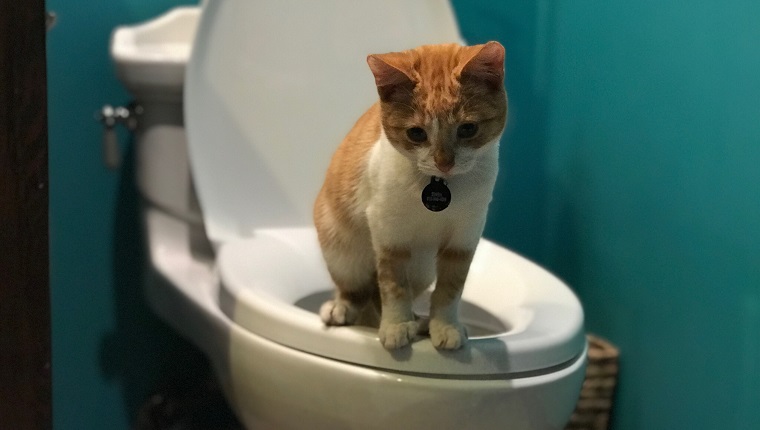Just about everyone has their personal thinking involving Can You Flush Cat Poop Down The Toilet?.

Introduction
As feline proprietors, it's vital to be mindful of exactly how we throw away our feline buddies' waste. While it may appear convenient to flush cat poop down the bathroom, this technique can have detrimental repercussions for both the environment and human wellness.
Alternatives to Flushing
Thankfully, there are more secure and more responsible methods to get rid of feline poop. Take into consideration the adhering to options:
1. Scoop and Dispose in Trash
The most common technique of taking care of pet cat poop is to scoop it into an eco-friendly bag and throw it in the trash. Be sure to make use of a devoted trash scoop and dispose of the waste quickly.
2. Use Biodegradable Litter
Opt for biodegradable pet cat litter made from materials such as corn or wheat. These clutters are environmentally friendly and can be safely thrown away in the garbage.
3. Hide in the Yard
If you have a backyard, take into consideration hiding pet cat waste in an assigned location far from vegetable yards and water sources. Make sure to dig deep adequate to avoid contamination of groundwater.
4. Mount a Pet Waste Disposal System
Purchase a family pet garbage disposal system especially developed for pet cat waste. These systems use enzymes to break down the waste, decreasing smell and environmental effect.
Health Risks
In addition to environmental problems, purging cat waste can additionally present wellness risks to people. Cat feces may have Toxoplasma gondii, a bloodsucker that can cause toxoplasmosis-- a potentially extreme disease, particularly for pregnant ladies and people with damaged body immune systems.
Environmental Impact
Purging feline poop presents damaging virus and parasites right into the water supply, posing a significant risk to aquatic environments. These impurities can negatively affect aquatic life and compromise water quality.
Conclusion
Liable pet possession extends beyond offering food and sanctuary-- it likewise involves correct waste management. By avoiding purging feline poop down the toilet and going with different disposal approaches, we can lessen our environmental impact and secure human wellness.
Why Can’t I Flush Cat Poop?
It Spreads a Parasite
Cats are frequently infected with a parasite called toxoplasma gondii. The parasite causes an infection called toxoplasmosis. It is usually harmless to cats. The parasite only uses cat poop as a host for its eggs. Otherwise, the cat’s immune system usually keeps the infection at low enough levels to maintain its own health. But it does not stop the develop of eggs. These eggs are tiny and surprisingly tough. They may survive for a year before they begin to grow. But that’s the problem.
Our wastewater system is not designed to deal with toxoplasmosis eggs. Instead, most eggs will flush from your toilet into sewers and wastewater management plants. After the sewage is treated for many other harmful things in it, it is typically released into local rivers, lakes, or oceans. Here, the toxoplasmosis eggs can find new hosts, including starfish, crabs, otters, and many other wildlife. For many, this is a significant risk to their health. Toxoplasmosis can also end up infecting water sources that are important for agriculture, which means our deer, pigs, and sheep can get infected too.
Is There Risk to Humans?
There can be a risk to human life from flushing cat poop down the toilet. If you do so, the parasites from your cat’s poop can end up in shellfish, game animals, or livestock. If this meat is then served raw or undercooked, the people who eat it can get sick.
In fact, according to the CDC, 40 million people in the United States are infected with toxoplasma gondii. They get it from exposure to infected seafood, or from some kind of cat poop contamination, like drinking from a stream that is contaminated or touching anything that has come into contact with cat poop. That includes just cleaning a cat litter box.
Most people who get infected with these parasites will not develop any symptoms. However, for pregnant women or for those with compromised immune systems, the parasite can cause severe health problems.
How to Handle Cat Poop
The best way to handle cat poop is actually to clean the box more often. The eggs that the parasite sheds will not become active until one to five days after the cat poops. That means that if you clean daily, you’re much less likely to come into direct contact with infectious eggs.
That said, always dispose of cat poop in the garbage and not down the toilet. Wash your hands before and after you clean the litter box, and bring the bag of poop right outside to your garbage bins.
https://trenchlesssolutionsusa.com/why-cant-i-flush-cat-poop/

As a devoted reader about How to Dispose of Cat Poop and Litter Without Plastic Bags, I imagined sharing that post was worthwhile. Kindly take a moment to distribute this article if you appreciated it. Thank you for your time invested reading it.
More Details